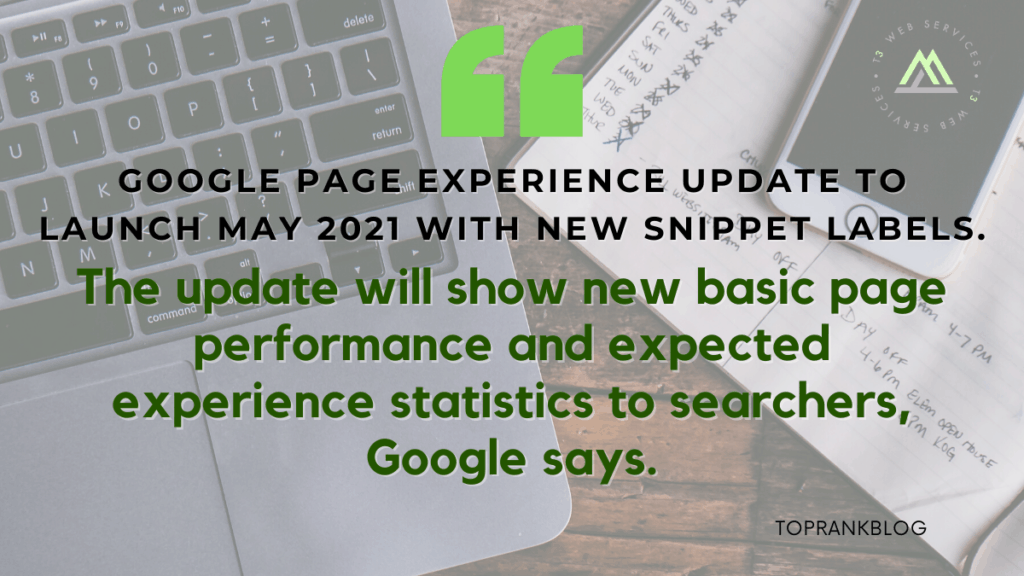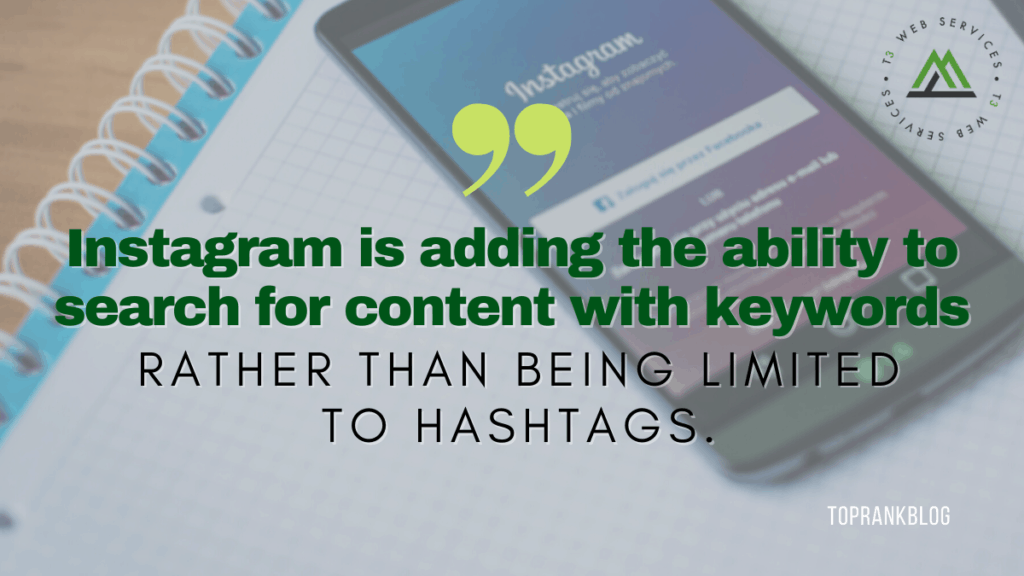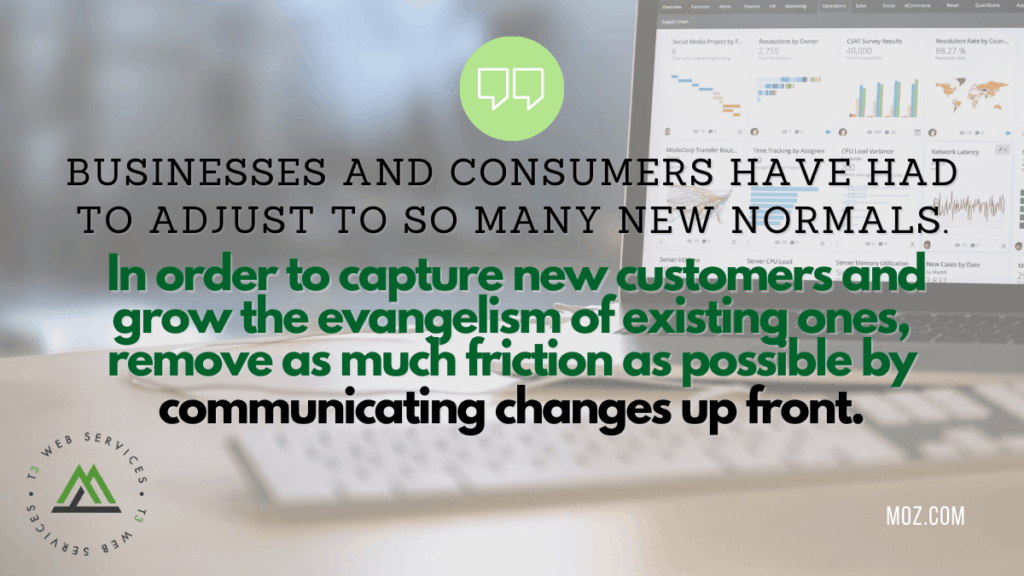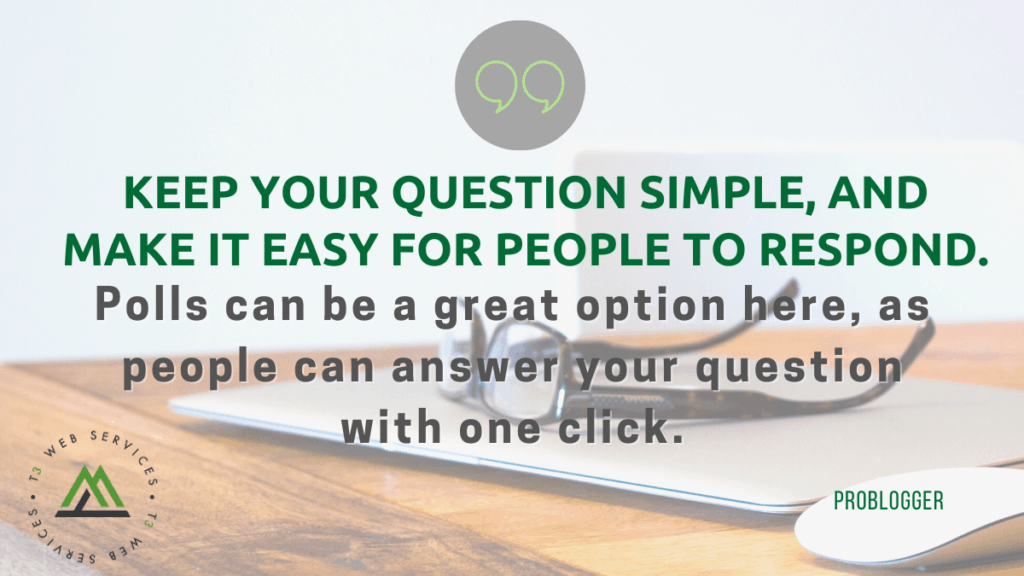To say that the Digital Marketing industry is a fast-paced world would be an understatement. Everything is changing so fast, and you need to be continuously up on your toes. Do you want to know how you could keep up? We’re so glad you asked!
On this week’s blog, we’ll dive in on topics about what we should look forward to for the year ahead. 2020 has been such an extreme rollercoaster ride, and the events and challenges we have faced have made a remarkable impact on our lives – may it be as a marketer or on a personal level. We’ll also get to learn the SEO how-to’s with regards to backlinks, as well as leveraging your blog posts as an effective communication tool with your readers and keeping them engaged up to the last paragraphs of your post. There’s so much to explore; let’s keep on reading the articles below!
B2B Marketing News: Digital Marketing Priorities, Ultimate CX, B2B Burnout, The Power of Podcasting


Where Do Digital Marketers’ Priorities Lie for the Year Ahead?
Digital marketers have a clear vision of their priorities though some are working with less marketing resources than others, according to Altimeter’s State of Digital Marketing report for 2020. The report highlights that organizations are either cutting costs as a response to the financial uncertainties of the crisis or upping investments in digital to keep up with customers moving online. MarketingCharts
The CX Courtship: How B2B Brands Get To The Partnership Stage [Merkle Study]
The B2B customer experience should be just as smooth as B2C. But too often it’s not. Indeed, 35% of businesses with 1,000 or more employees find choosing a B2B supplier to be almost a nightmarish process, judging by Architecting The Ultimate Customer Experience, a study by Merkle, with participation from its gyro and B2B International agencies. MediaPost
B2B Pros Say: ‘We’re Burned Out’ By Pandemic: Study
B2B marketers are falling apart from the stress of COVID-19 and its ongoing impact, according to Revealing What’s Fact And What’s Fiction, a study by RollWorks. Of the marketers surveyed, 50% have suffered from pandemic-related burnout, And 50% say the lines between work and personal life have become more blurred in a negative way. Email Marketing Daily

Instagram is Making it Possible to Search by Keyword


How Does Instagram Keyword Search Work?
Instagram keyword search works by allowing users to type in a keyword such as “home office inspiration,” rather than being limited to a hashtag like #homeofficeinspiration.
Search results should then surface posts about home office inspiration even if they’re not specifically tagged as such.
It’s not exactly known how Instagram determines what a post is about without relying on hashtags.
It’s known that Instagram will use captions to surface posts for keyword searches, but even there are still many questions.
For example – is it exact-match only? Can Instagram’s algorithm understand synonyms? Is there any AI or machine learning involved to help the algorithm recognize what’s depicted in an image?
A company spokesperson tells The Verge that Instagram considers “a number of factors” when returning search results. This includes the type of content, captions, when it was posted, and more.
Potential For Instagram SEO?
Perhaps the most exciting aspect of this update, at least for marketers and search enthusiasts, is the potential for Instagram SEO.
Previously, the only way to optimize Instagram posts was to include relevant hashtags and perhaps a location tag (if applicable).
Now there’s a whole new algorithm for marketers to understand and optimize for. For the first time we can actually have discussions about Instagram ranking factors.
Before jumping into that, however, it may be best to wait and see how this change impacts user behavior. We don’t yet know how users will adapt to this new way of searching for posts on Instagram.

https://www.searchenginejournal.com/instagram-keyword-search/387959/?utm_source=sej-feed#close
How to Get Backlinks in 2021 [Series Part 2: Prospecting] — Whiteboard Friday


As we head into 2021, the work of reclaiming lost links and building new ones remains crucial. In this week’s brand new episode of Whiteboard Friday, SEO expert Britney Muller is back with the second installment in her link building series, this time walking us through some tips and tricks for an important part of your link building journey: link prospecting.
Link prospecting
So there are really two ways to do link prospecting. One is to evaluate what’s worked well in the past. How have websites in this particular industry gotten links in the past? The second is where are there content gaps? Where are there some opportunities to create wanted or desired content for a particular space?
Explore competitive backlinks
Let’s go down the first one. So one of the more popular ways is to use a backlink tool to evaluate competitive backlinks. So not only are you evaluating the backlinks to Competitor A and Competitor B, but you can start to do some fun things with the intersection of these.
So what we’re looking at is: What are the shared backlinks that Competitor A and Competitor B both have that you don’t? What does that look like? If these websites are linking to both A and B, why couldn’t they also potentially link to you? Those tend to be more promising backlink prospects.
It’s also very easy to use a tool like Link Intersect, my all-time favorite, within Moz Pro to very, very quickly identify what those opportunities are. From there, you can also start to evaluate old or outdated linked to content. This is really just sort of setting the stage and better understanding again what’s worked well in the past.
What are the top pages that are linked to for Competitor B and Competitor A? What kind of content is that? Is there anything that’s incredibly outdated that has a ton of backlinks to it, where you could potentially update it and encourage those sites to link to you? There are tons of very interesting and fun ways to explore that. Link Explorer, I mean, honestly so, so powerful and easy to quickly filter and sort different opportunities there.

https://moz.com/blog/how-to-get-backlinks-2021
Business as Unusual: How to Communicate Your New and Updated Services with Google My Business


Since the COVID-19 pandemic hit in early 2020, business owners have had to move quickly to make drastic changes in their services to meet searchers’ new needs in a continuously unpredictable landscape.
While “Near me” searches saw a slight drop in early 2020, since then, have maintained a steady increase, further solidifying the need for brands and businesses of all sizes to be present and discoverable online.

What types of questions are searchers asking?
How can I do business with you?
When thinking about your Google My Business profile and adjustments to your information, the most important element is informing searchers how they can do business with you.
You’ll want to ensure all of your core location data is updated. This includes marking whether or not you’re temporarily closed. If you’re open, you should have the most accurate operating hours published.
Furthermore, you should make it as easy as possible for searchers to get in contact with you if they have any questions. This includes making sure your phone number is accurate, monitoring your Q&A section on Google My Business, and enabling messaging if you have the staff to respond. These are all methods that make customers feel connected to you, which will encourage them to convert and purchase from you.

https://moz.com/blog/new-services-google-my-business
How to Use Instagram User Generated Content to Be a Social Media Success


Instagram User Generated Content boosts brand credibility
Consumers are more likely to view UGC as authentic content and, as a result, trust this Instagram content more as compared to content created by a brand. This boosts brand credibility as people increasingly are of the opinion that they are not going to get any authentic content right off the bat from brands. That’s to say UGC instantly puts your brand in a better light. People don’t trust what they see on Instagram ads and that distrust seeps into purchase behaviors too. Want your brand to feel more credible? Use UGC.
Be it any product or brand—authentic images regularly pick up more likes, shares and engagements including pointed visitor action than branded content, especially from brands you are not familiar with.
Instagram User Generated Content helps generate trust
Nothing gets better at creating trust than UGC. No matter what the product or service is, people want to know what they stand to gain when they order something.
Research points out that over 30 percent of millennials won’t visit a restaurant if the particular restaurant didn’t have a good Instagram presence. What does an Instagram presence mean? It doesn’t mean having an account. It means regularly adding photos and keeping its customers updated about its latest products and news.
An inactive Instagram account is tantamount to a bad food experience.
That’s not to say reviews and ratings are not essential. Your customers are always checking your restaurant reviews before they order anything.

https://nealschaffer.com/instagram-user-generated-content/
The 6 Content Marketing Future Trends You Need To Understand Today


Here are 6 prominent Content Marketing Trends you should learn and implement:
1) Results-Focused Content:
Result-driven Content is one of the important trends to learn and implement to get better conversions. 91% of B2Bs and 86% of B2Cs are currently using content marketing. Despite the numbers, SEO score, and rankings no business can survive without any conversions. Businesses that only focus on rankings instead of creating result-driven content have a tough pill to swallow. Result-focused content can be anything depending on the marketing objectives such as sales, leads, new subscribers, downloads, sign-ups, engagements, etc.
And to get more results, you should deliver solid results to customers. So Creating a content strategy that focuses on buyer’s personas and problems, and solving those problems with simple step-by-step solutions can be effective in achieving your end goal. You should stay updated and relevant as can be. Discuss and connect your team with a project management solution to make sure everybody is aligned with your content strategy plan.
Put it simply, any strategy which simplifies a user’s process of finding a solution by increasing their engagement will bring more results.
2) Video-Based Content:
Another important trend to look for is the rise of video-based content. People nowadays hardly read, they rather watch more video content. In the modern-day, even consumers demand more video content from brands. And because of its visual and engaging feature, it gets the user’s traction more than any other type of content. Marketers are now able to leverage video content to convey complicated or even the dullest message to mass audiences. More than 80% of people would prefer to watch a video over reading a blog.

https://nealschaffer.com/content-marketing-future-trends/
8 Effective Ways to Wrap up Your Blog Posts


Here are eight effective ways to wrap up your blog posts and get as much out of those final paragraphs as possible.
1. Sum up your message
Remember the English essays you wrote in high school? Chances are you finished each one them with a summary of what you’d written about.
So why not do the same with your blog posts?
Think about what you’ve written, and the overall message you’re trying to convey. And then drive that message home in your final paragraphs. You may even want to summarise it slight differently so it doesn’t feel like you’re repeating yourself.
Summarising what you’ve talked about is especially important when you’ve written a long post that covers a lot of different points. Chances are your reader has already forgotten some of them, and so a quick summary of those points (perhaps as bullet points) will jog their memory and help them remember each one.
2. Ask a question
Another way to wrap up your post is by asking your reader a question and encouraging them to answer it. You could ask them to post their answer as a comment on your blog, or on one of your social media channels.
Depending on the type of question you ask, you can even influence and shape the discussion people have on your blog. For example, you could ask something like “Tell us a story about a time when you had this experience” or “What’s your experience with this particular area?”



Leave a Reply